What’s Radical? Paul’s ART STUFF ON A TRAIN #180
How do you recognise the radical? Maybe it should be something new which leaves you wondering whether it has any merit at all. That can be done through surprising materials used or unexpected formal decisions made – but it’s getting harder to achieve the sort of impact which stops you in your tracks, now that pretty much anything goes. So content, rather than form, might offer more promise, and Kelly-Anne Davitt’s show in Cork Street (‘Beach Balls and Melons’ at Dadiani Fine Art to 15 Sept) is certainly brazen in that regard. Fairground style, she lights up six comically-breasted women with the headline ‘The formula for perfect breasts. Kelly’s got them. Have you?’. Davitt lifted that from an article about Kelly Brook, playfully putting herself in the other Kelly’s place. There’s mockery involved, but Davitt clearly enjoys the painting. As for the critique, it just happens that during her production period, the ‘lads mag’ Nuts, from which the poses originate via Davitt’s own photo session with glamour model Sophie Reade, ceased publishing; The Sun ended its Page 3 tradition; and Playboy gave up nudity. Whether that represents changes in attitude or merely the effect of the Internet is another matter, of course. Last week I wrote about Claude Cahun’s agender presentation of incipient feminism: here’s a rather complete modern contrast. Is it any good? I’m not sure, but that’s radicalism for you.
Kelly-Anne Davitt: ‘Beach Balls and Melon’, installation shot
Most days art Critic Paul Carey-Kent spends hours on the train, traveling between his home in Southampton and his day job in London. Could he, we asked, jot down whatever came into his head?
How To Be Neuter: Paul’s ART STUFF ON A TRAIN #179

Claude Cahun: ‘I Extend My Arms’, 1931-2
There’s been more attention paid of late to pioneering feminist artists: Mary Kelly, Carolee Schneeman, Lynn Hershman Leeson and Maria Lassnig, for example, all receive far more attention now than they did a decade back. Going back further, Claude Cahun (1894 – 1954) has been increasingly prominent. She’s in the new Tate Modern hang, and two teeming multi-artist shows include her highly staged, androgynous and surreally tinged self-portraits which now seem to prefigure Cindy Sherman and the selfie generation. She’s in Duro Olowu’s teeming celebration of the cultural role and artistic parallels of clothing as an aspect of self-identity (Camden Arts Centre to 18 Sept) and Elizabeth Price’s touring Arts Council show ‘In a Dream You Saw a Way to Survive and You Were Full of Joy’ (Whitworth, Manchester, to 31 Oct). Here her arms emerging somewhat comically from a torso of rock; and she poses as an exhibit in the British Museum. Cahun, again well suited to current trends, identified as agender, switching from her given name of Lucy Schwob, while her lifelong partner and step-sibling Suzanne Malherbe adopted the name ‘Marcel Moore’. ‘Neuter’, said Cahun, ‘is the only gender that always suits me’.
Claude Cahun: ‘Crystal Heads, British Museum’, 1936
Most days art Critic Paul Carey-Kent spends hours on the train, traveling between his home in Southampton and his day job in London. Could he, we asked, jot down whatever came into his head?
The Ethics of Dust: Paul’s ART STUFF ON A TRAIN #178
You can rely on Artangel for unusual large scale projects which are persuasively site-related. Just so, during the Parliamentary recess there are two ways of getting into the Palace of Westminster: book a guided tour (£18.50) or arrange to visit the latest Artangel project (free via www.artangel.org.uk/project/the-ethics-of-dust to 1 Sept). The title comes from John Ruskin’s pioneering recognition of the importance of preserving historic buildings. What you see is Jorge Otero-Pailos’ display of the dirt his team have removed from the eastern wall of the thousand year old Westminster Hall. The process was to paint the limestone, section by section, with latex and peel it away together with the surface accumulations of a millennium. Mount the section on a translucent backing fabric and hang the result in front of the wall. Any one section can be viewed three times: a frontal view of the dust, a back view – the wall’s eye view, perhaps – of the dust from the back, and the now-cleaned wall itself (as top to bottom below). The effect is a fascinating palimpsest not unlike a vast (54 x 6m) abstract painting by, say, Lawrence Carroll. That reminds me that Otero-Pailos did the same thing for the Doge’s Palace at the 53rd Venice Biennial in 2009, whereas Carroll represented the Vatican in 2013. Anyway, you can speculate on whether the parliamentary soot comes from, say, the torches at the trail of Guy Fawkes in 1606, though I didn’t find this a much more personalasing connection than the claim that we all contain atoms which were there.
Most days art Critic Paul Carey-Kent spends hours on the train, traveling between his home in Southampton and his day job in London. Could he, we asked, jot down whatever came into his head?
Sexy Abstracts: Paul’s ART STUFF ON A TRAIN #177
Daniel Sinsel: ‘Untitled’, 2016
Daniel Sinsel’s new show (Sadie Coles to 25th Aug), rather typically for him, combines sensitive surface exploration with unusual materials both beneath the painted surface (canvas cut into ribbons then woven together; calf vellum) and on top of it (hazelnut shells, whale’s teeth, pink coral). Just as characteristically, the effect is sensual, to point up which the coral provides its painting with nipples, and there’s a testicular sculpture hanging nearby. That gives abstraction something of the charge more readily associated with the figurative. It occurred to me that among other gay artists, Donald Moffett, achieves some broadly parallel effects; and Prem Sahib mixes minimalism and sex potently. Moreover Sue Williams and Cecily Brown (recently at Thomas Dane) – though their paintings don’t get quite so far from representation – both abstract from sex. Come to that, sexual undertones are often ascribed to Georgia O’Keeffe’s semi-abstracted flowers (as at Tate Modern now) though she denied it. There’s obviously something of the macho male posturing in Pollock, but that’s not quite the same direct symbolism. Maybe some late Picabia pulls it off, but I can’t think of the current equivalent heterosexual male practitioner – is that just too tricky a position to take, too likely to descend into cliché?
Donald Moffett, ‘Lot 121909 (18/o)’ 2009. Oil on linen with wood panel support. 43 x 43 cm
Most days art Critic Paul Carey-Kent spends hours on the train, traveling between his home in Southampton and his day job in London. Could he, we asked, jot down whatever came into his head?
Open to the Mix: Paul’s ART STUFF ON A TRAIN #176
David Remfry: ‘Woman With Imaginary Dog II’, oil, 50 x 61 cm
I’m happy to accept the Royal Academy Summer Show (to 16 Aug – hurry along!) for what it is, but it’s often traduced – indeed, bad reviews have become a tradition to rival the 345 year old annual show itself – for its uneven quality, populism, an indigestibly dense hang (1240 works this year) and the clogging effect of veteran RAs being given automatic entry for formulaic work: Ken Howard, Anthony Green, Jeffery Camp, Bill Jacklin – you get the pictures. Another candidate for that list might be David Remfry, a dandy 73 year old who grew up in Hull, but moved to London and then to New York in 1995. A painter of people, he’s perhaps best known for large watercolours of urban scenes and of acquaintances he’s asked to dance in his studio at the Chelsea Hotel. Last year, he showed portraits of people with their dogs. Here, in open-minded mode, I enjoyed modestly-sized oils which played wittily with absence: a woman walking ‘with an imaginary dog’, so poking a little fun at himself; and the moody ‘It Begins Again’ in which the space where the woman’s body might have been added can also read as her torso in flimsy white clothing. Remfry also curated Room VIII, where he showed his view of the Hudson River from the Chelsea Hotel’s window, demonstrated a doubtful taste for the usual suspects named above – but also found room for some wilder work, much of it literally hairy.
Most days art Critic Paul Carey-Kent spends hours on the train, traveling between his home in Southampton and his day job in London. Could he, we asked, jot down whatever came into his head?
David Remfry: ‘It Begins Again’ – oil, 112 x 152 cm
‘Could Your Child Have Done That?’ Paul’s ART STUFF ON A TRAIN #175
Mindy Lee: ‘teef gnitniap | painting feet’, acrylic and watercolour on paper, each approx 47 x 34 cm, 2016
The Serpentine has a notably ancient combination currently in Alex Katz (89) and Etal Adnan (91), but at the other end of the age range, two interesting shows are not so much a case of the cliché-critique ‘my child could have done that!’ as the parental pride of ‘my child did that!’. At the Blyth Gallery in Kensington (to 26 Sept in the motherhood-inspired show ‘In Infancy’, with Sarah Gillham), Mindy Lee collaborates with her two year old son. Thus, for example, he used his feet to make the initial marks before she works around and responds to them, adding a Rorshach type print and depictions of both their feet. That process, says Lee, fetishises her son’s gestures and merges ideas of children’s butterfly paintings with psychological testing. Meanwhile, at Damien Hirst’s Newport Street Gallery in Vauxhall (to 16 Oct), Jeff Koons takes fetishising your son’s creations to another level: it was twenty years before he was satisfied with the production quality of the 27 interlocking aluminium pieces which make up his three metre high version of a mound of ‘Play-Doh’ which his two year old son Ludwig proudly showed him in 1994. Koons, notoriously, also shows explicit images of what, if not the moment of his son’s conception, were the relevant actions between him and Ludwig’s mother, the Italian porn star La Cicciolina. He went on, after their divorce, to fight a custody case over Ludwig which lasted almost as long as the making of ‘Play-Doh’…
Jeff Koons: Play-Doh, 1994-2014 – polychromed aluminium, 312 x 384 x 348 cm, one of ‘five unique versions’
Naked in Numbers: Paul’s ART STUFF ON A TRAIN #174
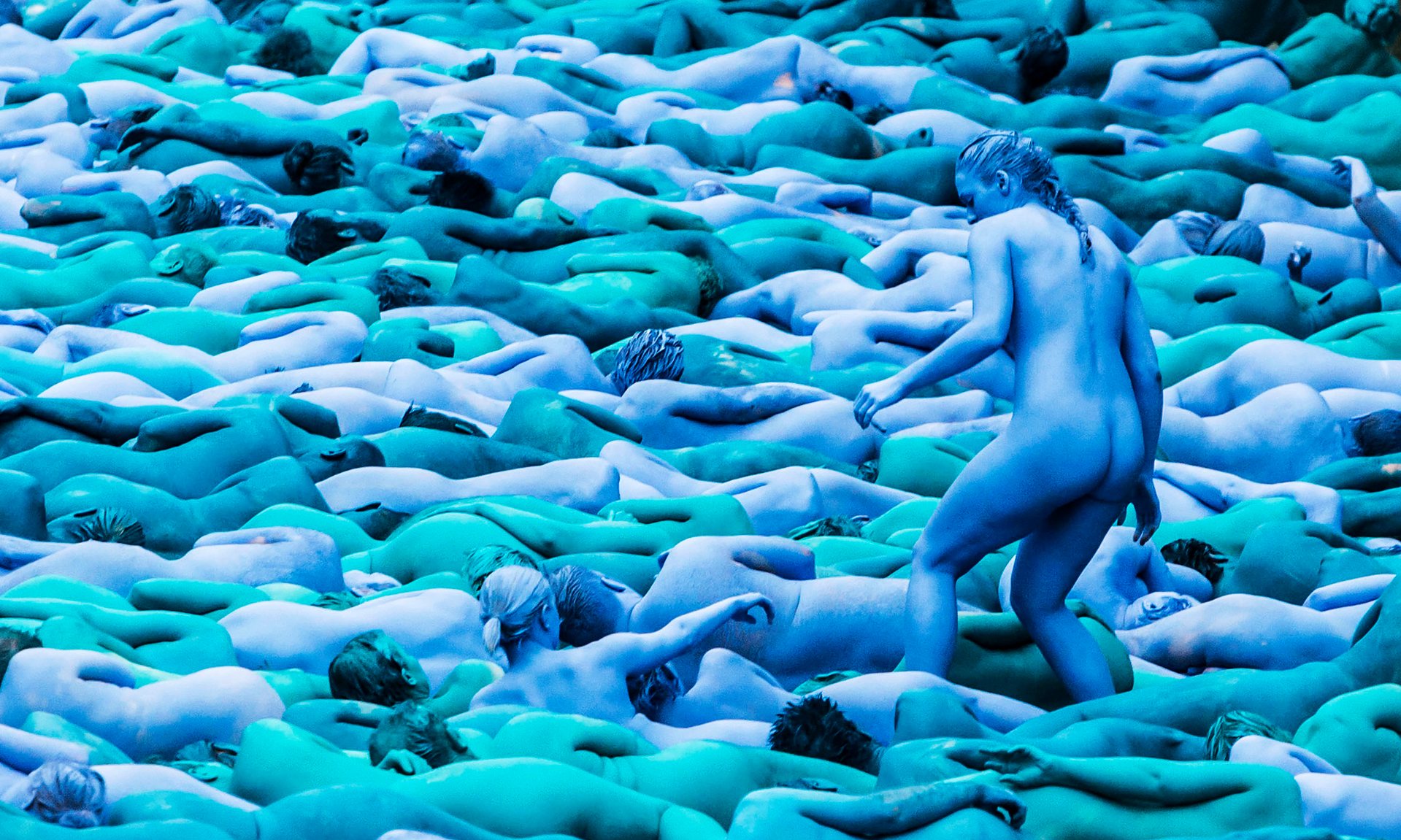
People manoeuvre into position as they take part in Sea of Hull by Spencer Tunick, Saturday July 9, 2016
The classic art nude, as painted or in performance, is the single figure. But group nudity, which has less aesthetic-erotic and more anarchic-social import, seems very much on trend at the moment. Veteran of the form Spencer Tunick recently had 3000 naked people paint themselves in marine blues in Hull for his contribution to the port’s programme as UK City of Culture next year. Body painting was very much central to the 1980’s performances of the Neo-Naturists, currently celebrated at Studio Voltaire in a suitably cacophonous installation with five films and two slides shows operating simultaneously. Vitrines of other work, documentation and memorabilia seek to situate their ludic silliness: equal parts a way of showcasing Wilma Johnson and the Binnie sisters’ painting skills; making a relishably provocative impact; and, using the personal body as a metaphor for the social body, pointing to the need to free up Thatcherite Britain. One of the most prominent works in Tate Modern’s newly opened wing has much the same ramshackle spirit: Marvin Gaye Chetwynd’s 2008 film ‘Hermitos Children, the pilot episode’ plays on 32 screens simultaneously, Watching from a sprawling beanbag made from the costumes in the film, you see performances strung into no kind of sensible narrative whuch concludes with ten minutes of naked frolics such as would have done the Neo-Naturists proud. Could this trend for communal self-discovery through nakedness be just what we need to banish the Brexit Blues?
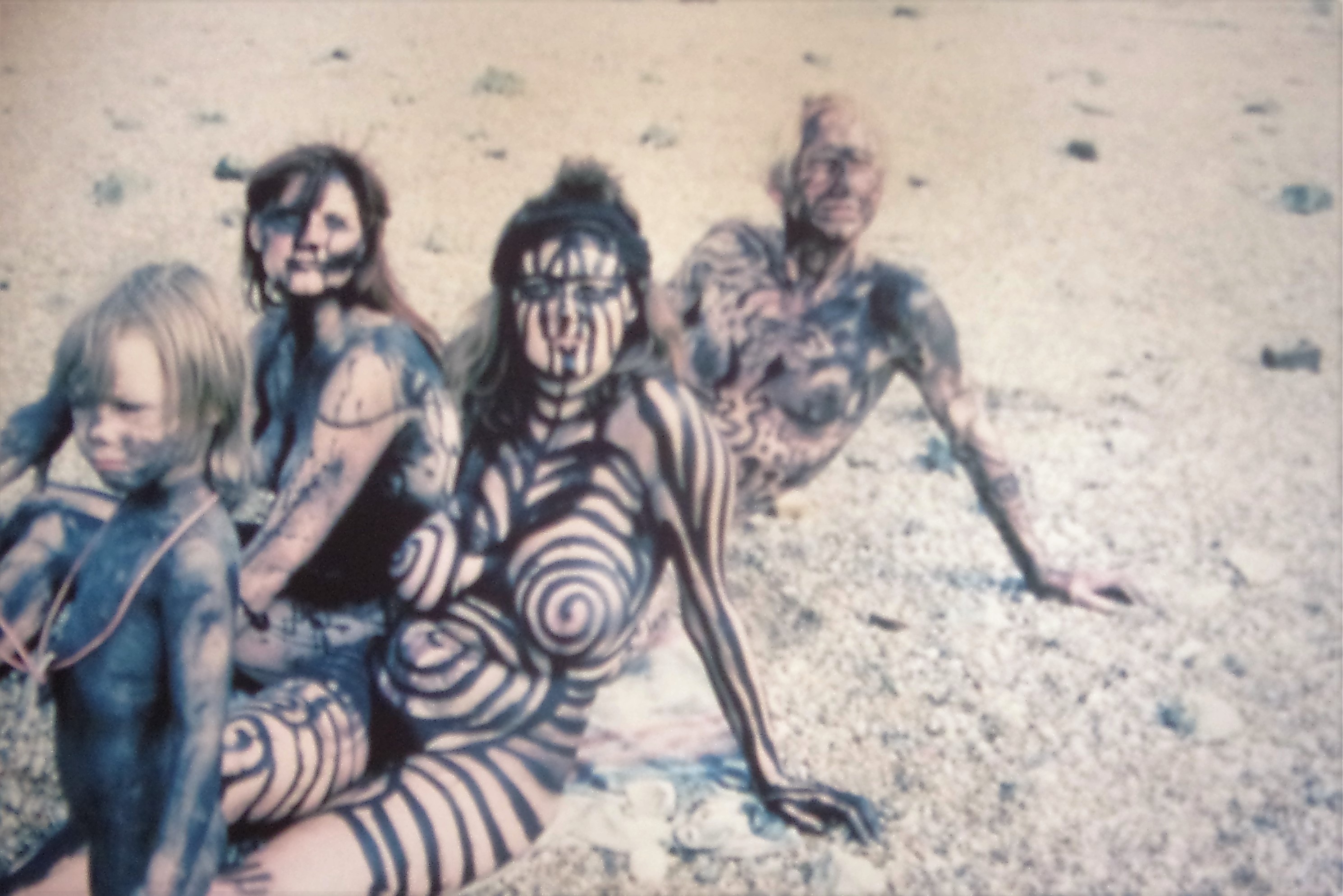
Neo Naturists, Black Rapport Day, Thames Beach Wapping, 17 July 1982 (Jennifer Binnie, Wilma Johnson, Nico Holah and Bruce Lacey) – Courtesy of the Neo Naturists Archive
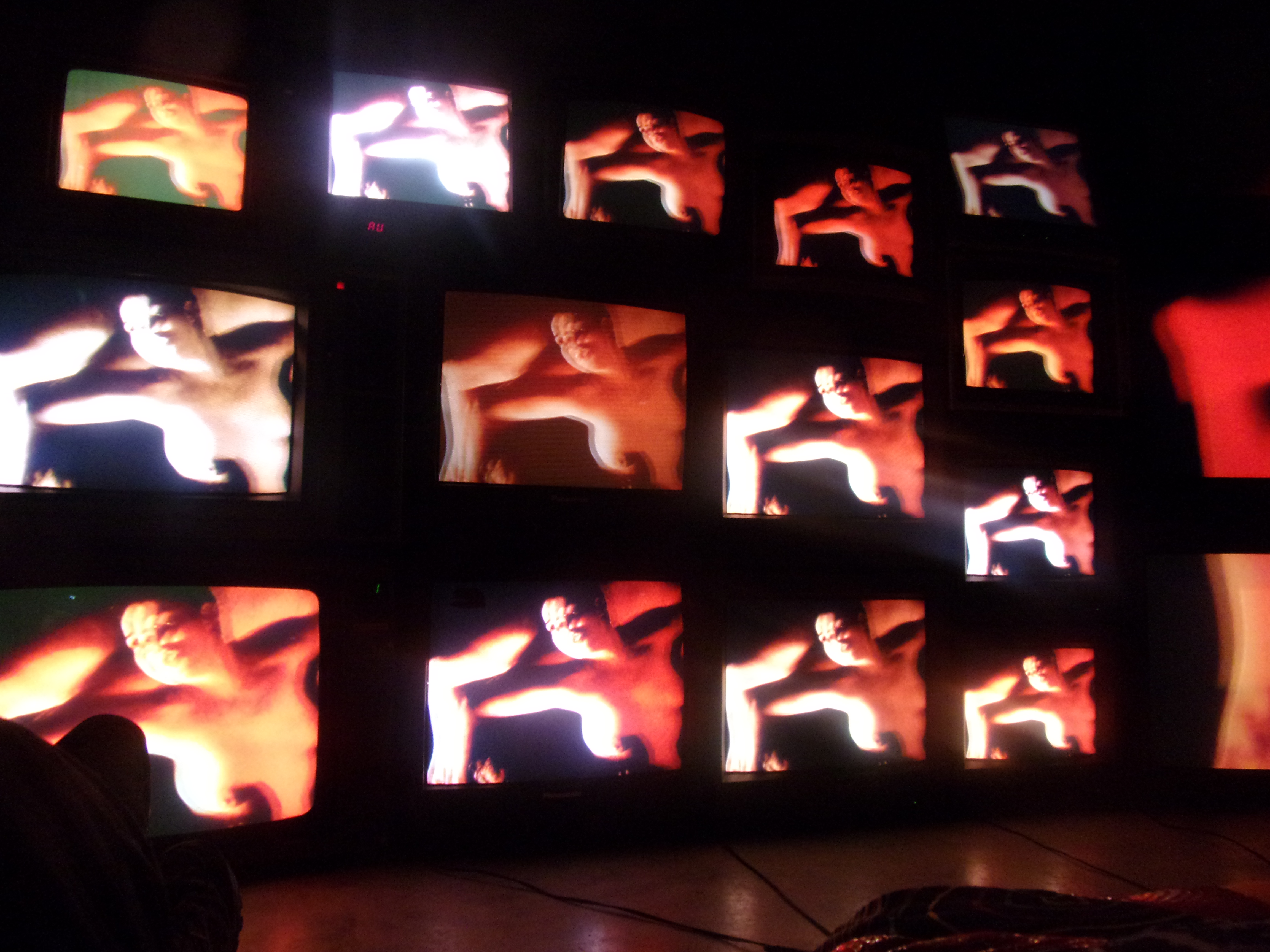
Marvin Gaye Chetwynd’s ‘Hermitos Children, the pilot episode’, 2008
Most days art Critic Paul Carey-Kent spends hours on the train, traveling between his home in Southampton and his day job in London. Could he, we asked, jot down whatever came into his head?
When Your Name’s Not Vital: Paul’s ART STUFF ON A TRAIN #173
NV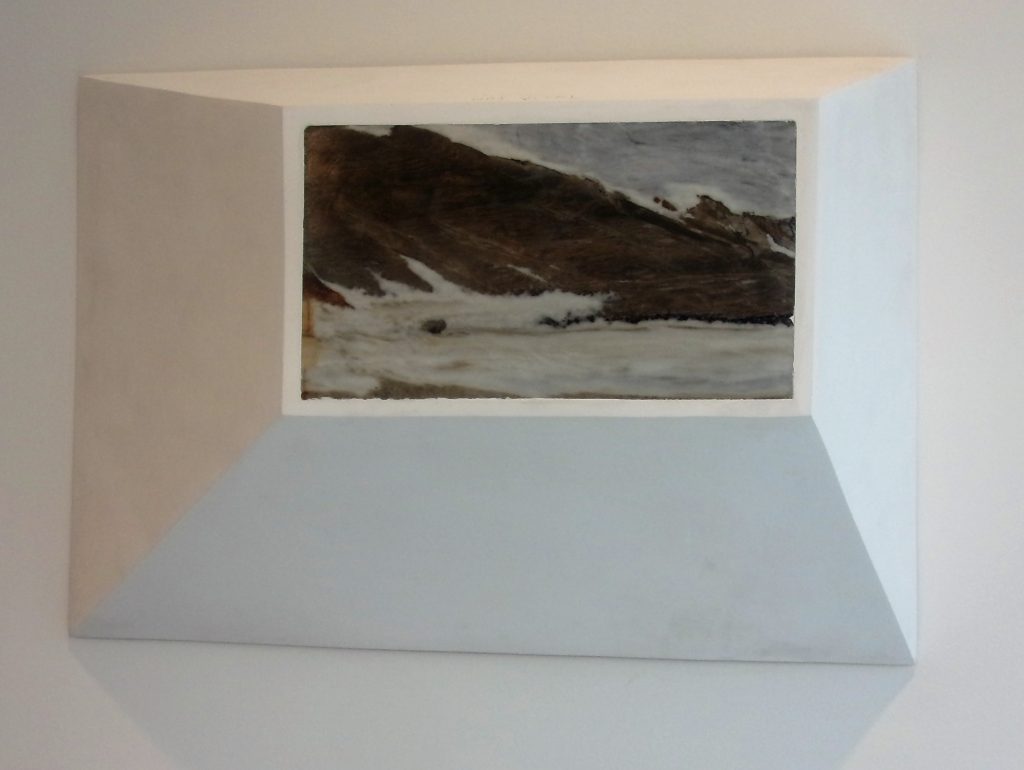
Not Vital: ‘Landscape’, 2013 – marble and plaster
Enigmatic Swiss artist Not Vital has a major showing at Yorkshire Sculpture Park (to Jan 2017) and an attractively focussed one at Ordovas in Savile Row (to 5 Aug). His origins are Romansch-speaking Swiss, but Vital is also fluent in Switzerland’s other – and more widely spoken – official languages of French, German and Italian. In none of them, though, does his name have the curious, if memorable, negative implication it picks up in English. The nomadic Vital has a studio in Beijing, and the London show ‘Muntognas’ (Romansch for ‘Mountains’) presents Chinese marble which he slices open to reveal the Alpine landscapes of his native country, as if the whole world reminds him of home. The process of reading the veins of one geology as the image of another reminded me of Salvador Dali’s paranoiac-critical technique, in which swans prove to be elephants too, and so on. The marble, renowned for its natural striations, is from the Dali area of Yunnan Province in South-West China, and is known as ‘Dali Stone’: not vital, I suppose, but nicely appropriate. That, in turn, reminded me of the set of three Dali collages (at Zurich’s Kunstberatung) which felt like the freshest Salvadorian salvo I’ve seen in years… Here’s a Christmas tree out of butterflies and angels’ wings.
Salvador Dali: ‘The Wings’, 1958 – Watercolour, pen and ink, and collage on paper
Masterpieces and Otherwise: Paul’s ART STUFF ON A TRAIN #172

S.H. Raza: ‘Jala Bindu’, 1998, 120 x 120 cm
‘Masterpiece’ (which ran 30.6 – 7.7 this year) presents a broader mixture than the typical fair. I was fascinated by lizards as medieval door knockers (at Sam Fogg); latex rubber models of mushrooms used to teach the cutomers of 1950’s French chemists what to avoid (Peter Petrou); Clive Sinclair’s version of Marriane Faithful’s torso, silver and near-abstract save for the casting of his then-girlfriend’s nipples (Whitford Fine Art); and a fabulous integration of old furniture with recent abstraction at Antwerp’s Axel Vervoordt. That included a taped-together stack of time cards – one of many objects which Japanese artist Sadaharu Horio leaves around the studio, adding paint daily over several years in a semi-conscious manner to bring everything into his scheme. I was also taken by two other abstractions with a meditative bent. S.H. Raza (born India 1922, but based in France from 1950) switched in 1979 from western-influenced landscapes to tantric meditations built around the bindu (dot) as the ‘I’ at the centre of a geometric universe. At New Dehli’s DAG Modern that read as a black sun over a sea of colour orchestration. Luis Tomasello’s ‘Objet plastique no 550’, 1983 (Dutko Gallery) is unusual among his works for its darkness, which generates brooding quality which plays down the efflorescence he achieves by reflecting colours onto the surface from the reverse of the wooden elements. Are all of those examples ‘masterpieces’? Perhaps not, but why let terminology get in the way of enjoyment?
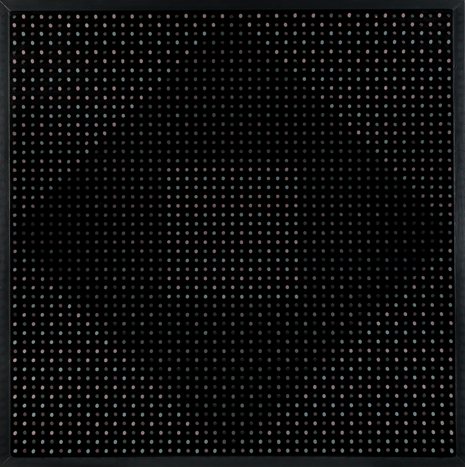
Luis Tomasello: ‘Objet plastique no 550’, 1983
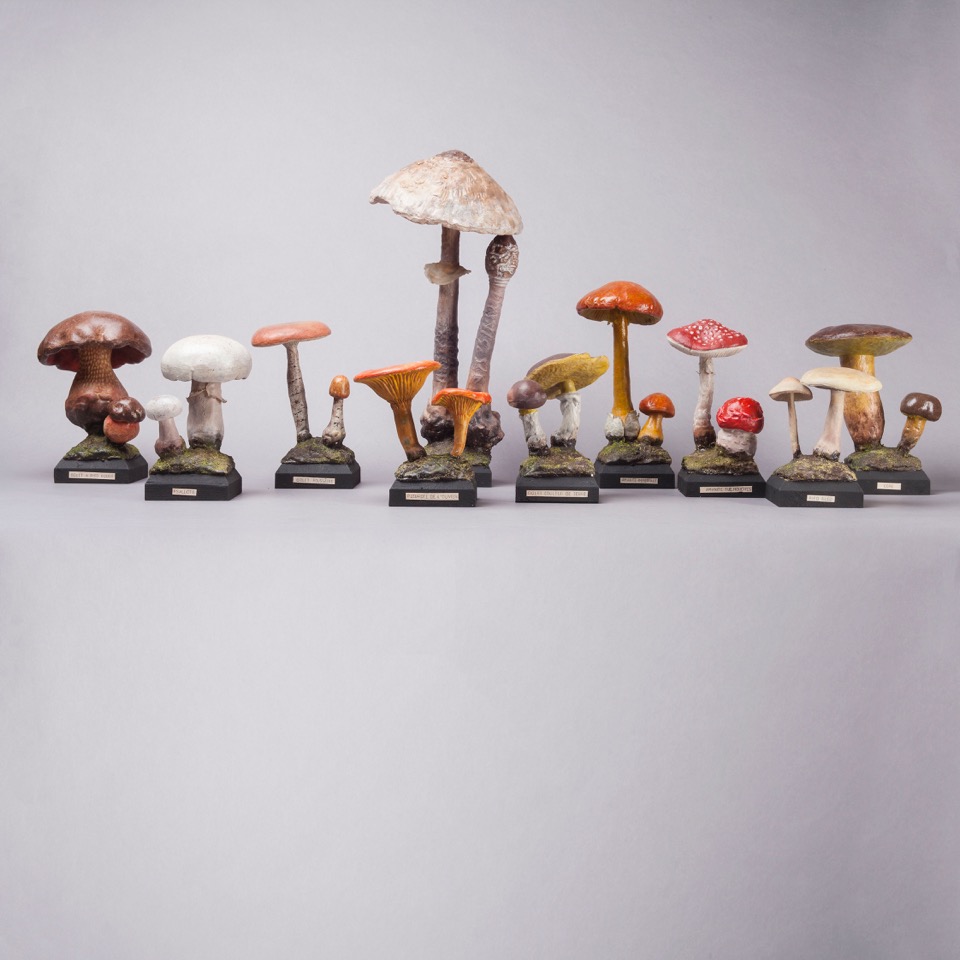
Group of latex rubber mushrooms, c 1950
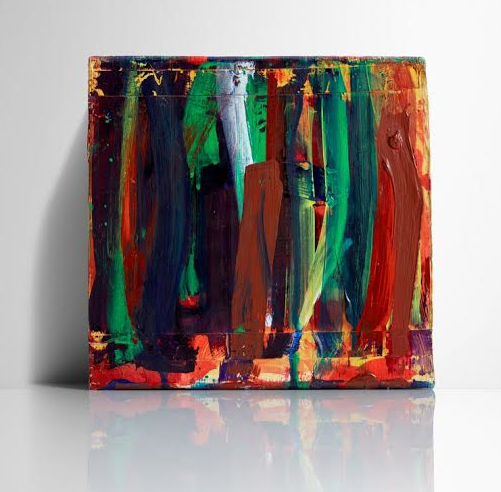
Sadaharu Horio: ‘Ironuri (Paint Placements)’, 1987, punch cards, acrylic paint, 20 x 20 x 9 cm
Horse Associations: Paul’s ART STUFF ON A TRAIN #171
Horse Associations: Paul’s ART STUFF ON A TRAIN #171
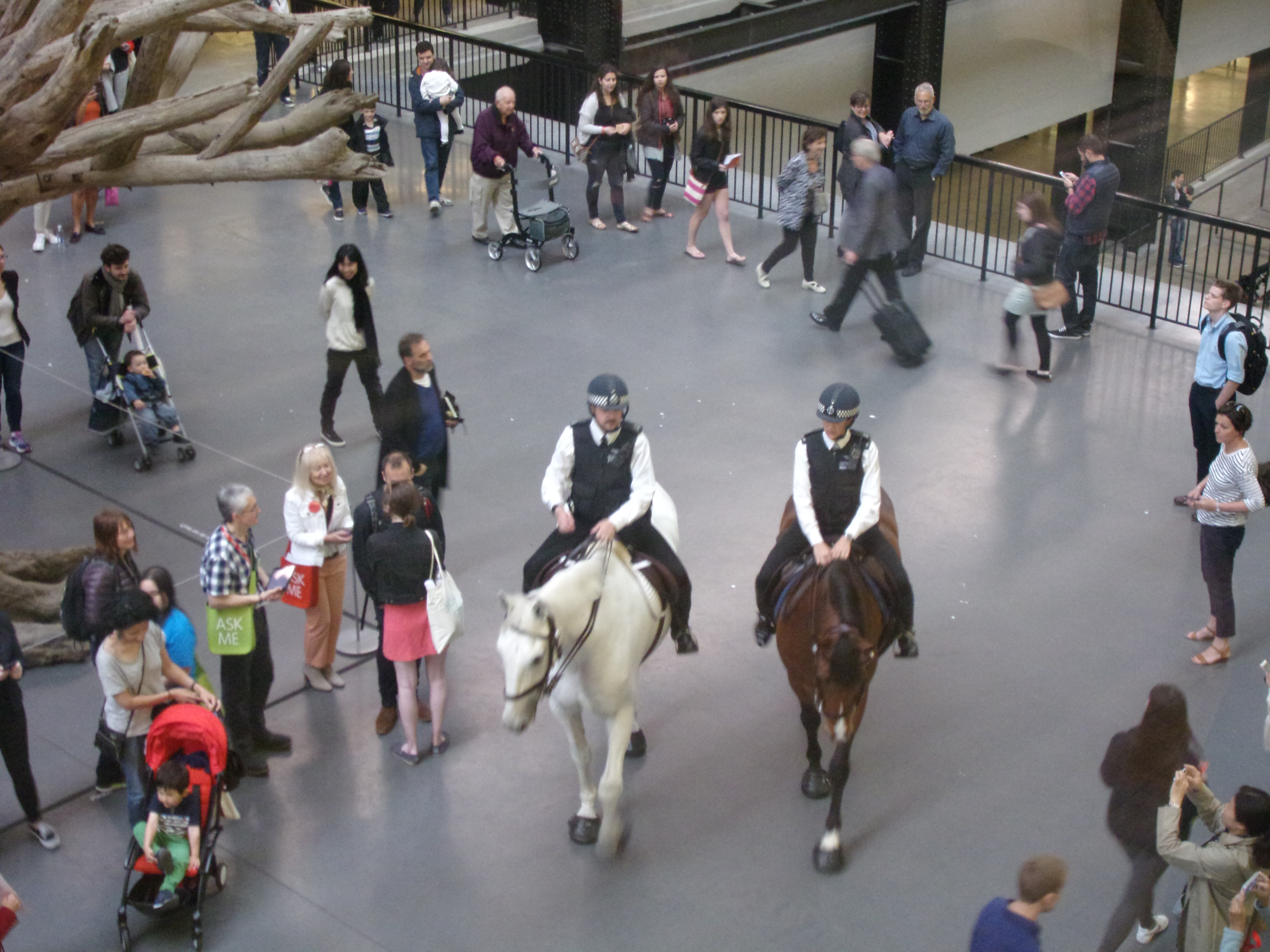
Tania Bruguera: ‘Tatlin’s Whisper #5’, 2008 Decontextualization of an action, Unannounced Performance, Behavior Art. Materials: Mounted police, crowd control techniques, audience.
Visitors to Tate Modern last Saturday may have been struck, not just by the newly-opened Switch House expansion, but by the sight of two mounted police officers controlling the crowds on the Turbine Hall Bridge. True, the gallery was busy, but it seemed a little heavy-handed for them to ask me to move on for no greater offence than looking at Ai Wei Wei’s bolted-together tree. Of course, it was an artwork, though Tania Bruguera hopes that isn’t so obvious at first: ‘I like people not to think it’s art, so they can really enjoy it as a lived event and not as a representation of a live event… like a vignette where the audience can have a little piece of experience with power. In this case it is with the police’. Once you know it’s art you may make other links, the obvious one being to Jannis Kounellis’ Arte Povera masterpiece, ‘Untitled (12 Horses)’, 1969, which was recently re-enacted in Gavin Brown’s New York gallery. According to Jerry Salz ‘their presence in an art gallery—peaceful, delicate, humbling—is something we don’t know we need to know until we know them, and then are grateful for knowing. This is an apt metaphor for what art galleries can do.’ Maybe so, but I associate them first with my wife, who loves horses with a passion. So let this column be for her…
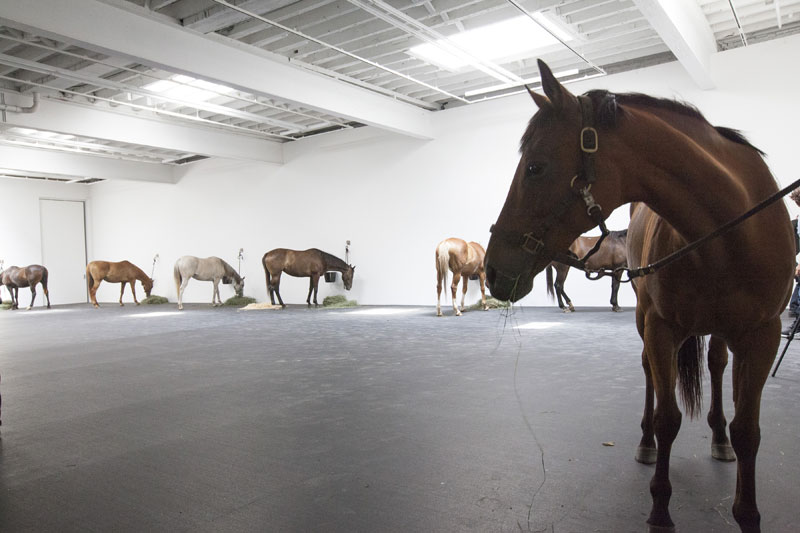
Jannis Kounellis: ‘Untitled (12 Horses)’, 1969, at Gavin Brown, 2016
Most days art Critic Paul Carey-Kent spends hours on the train, traveling between his home in Southampton and his day job in London. Could he, we asked, jot down whatever came into his head?
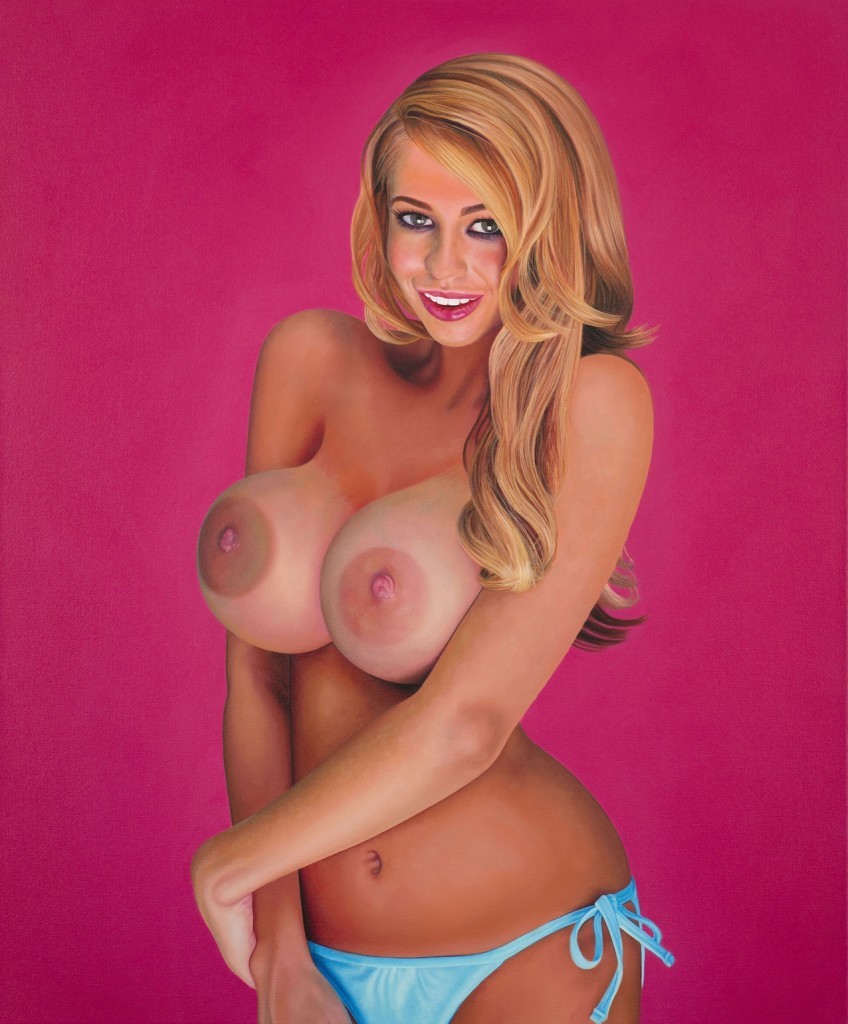
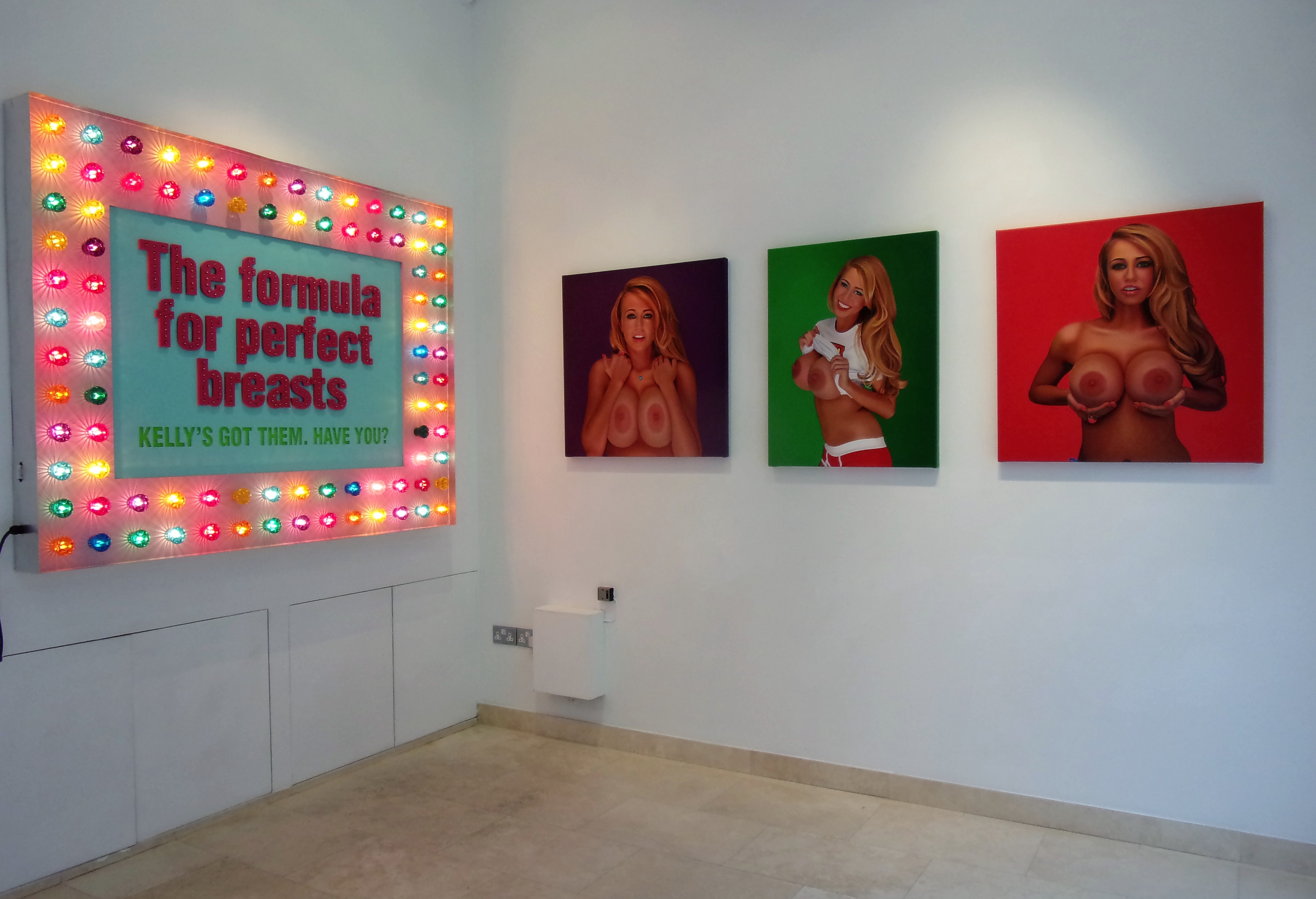

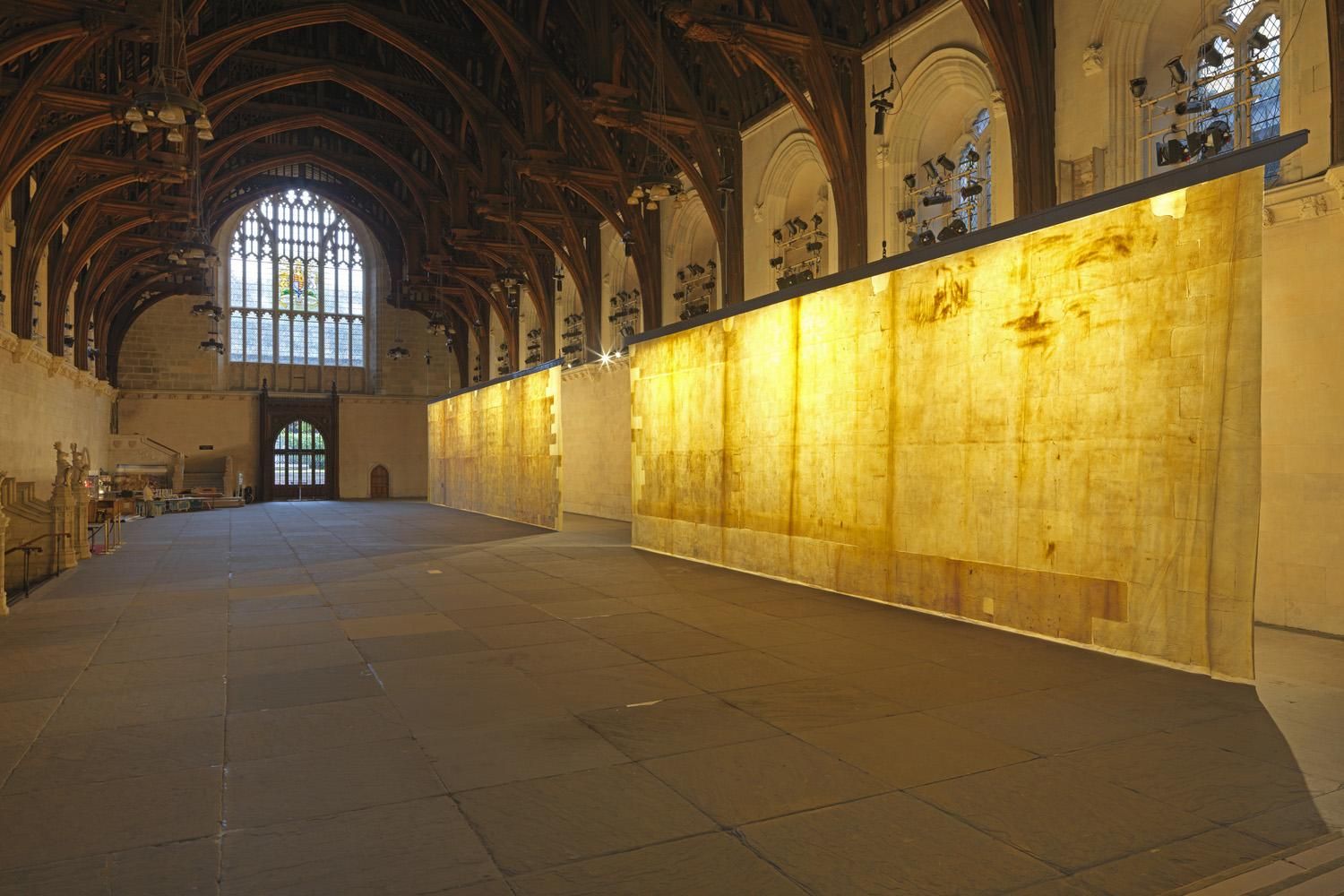



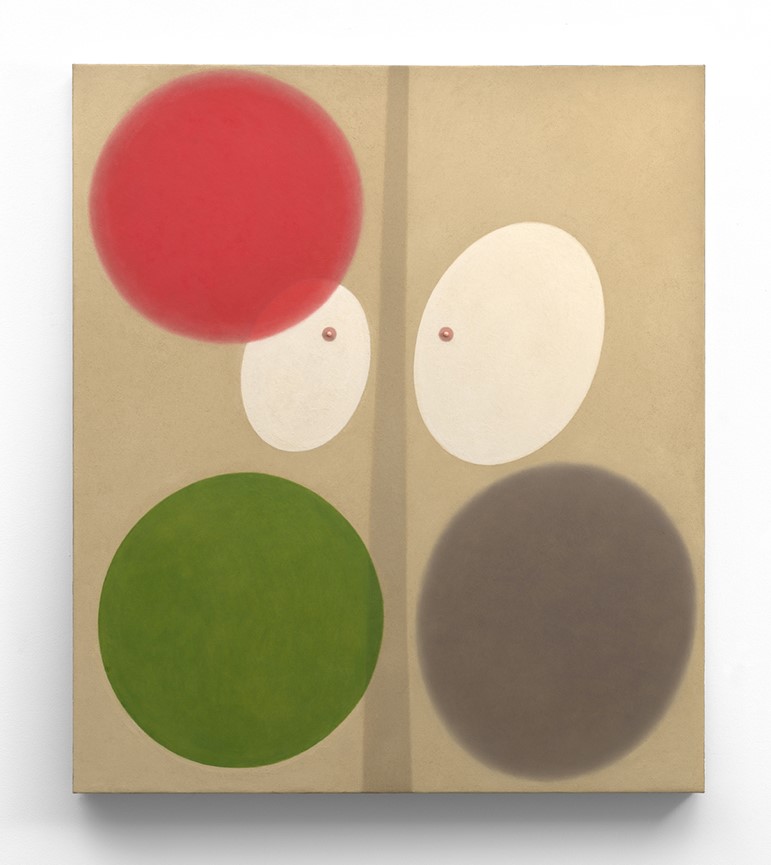

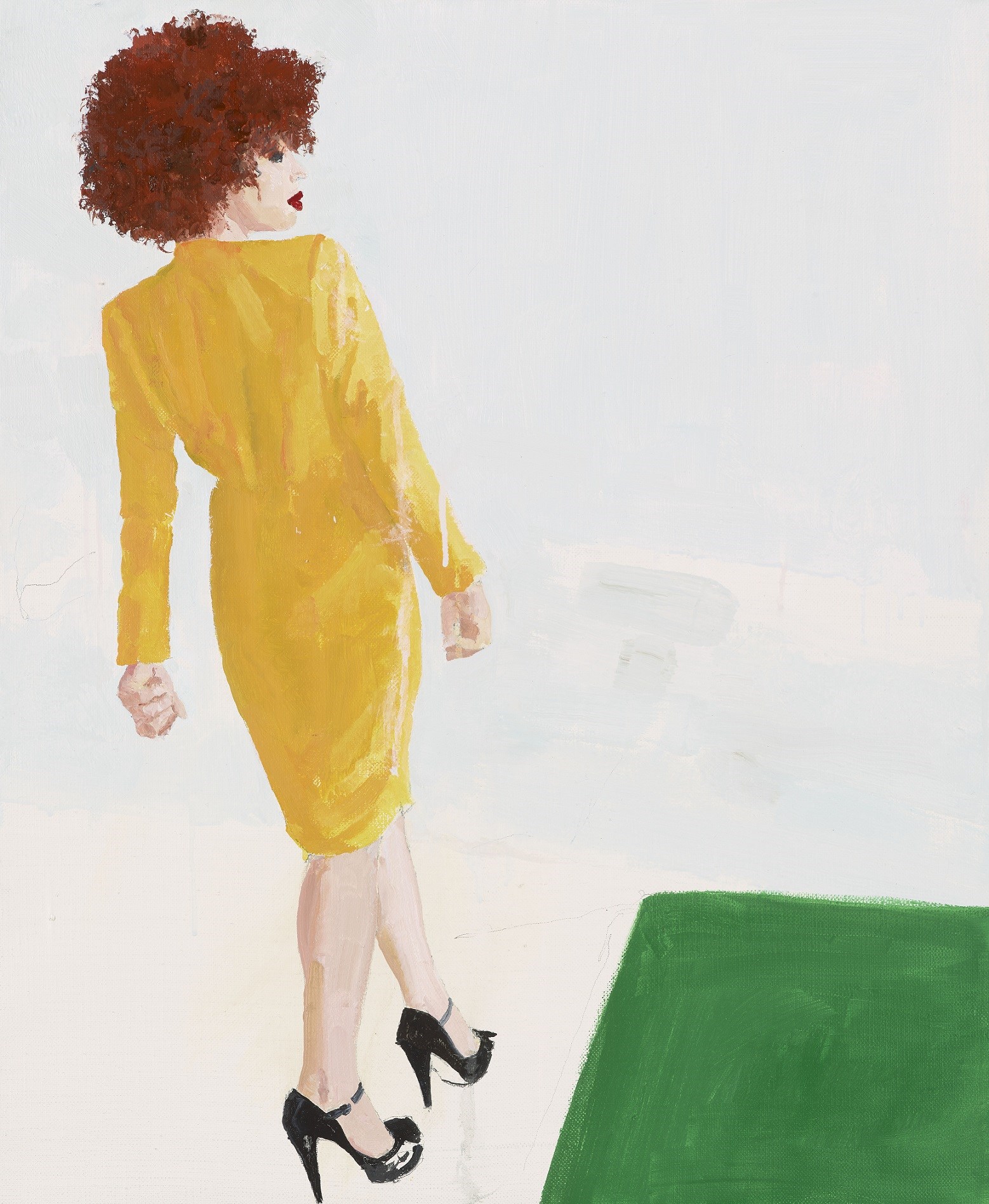
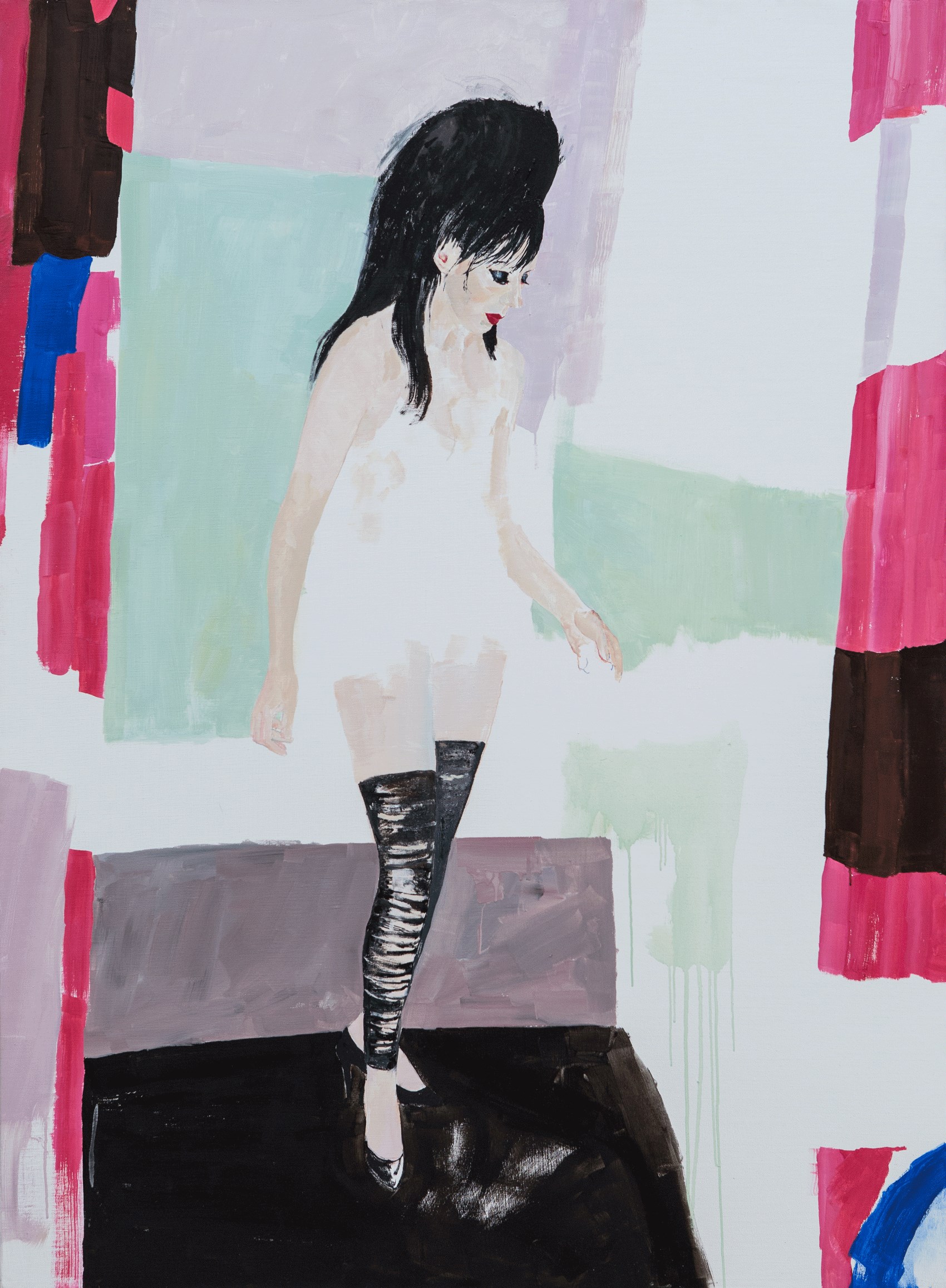




No comments:
Post a Comment
Note: only a member of this blog may post a comment.